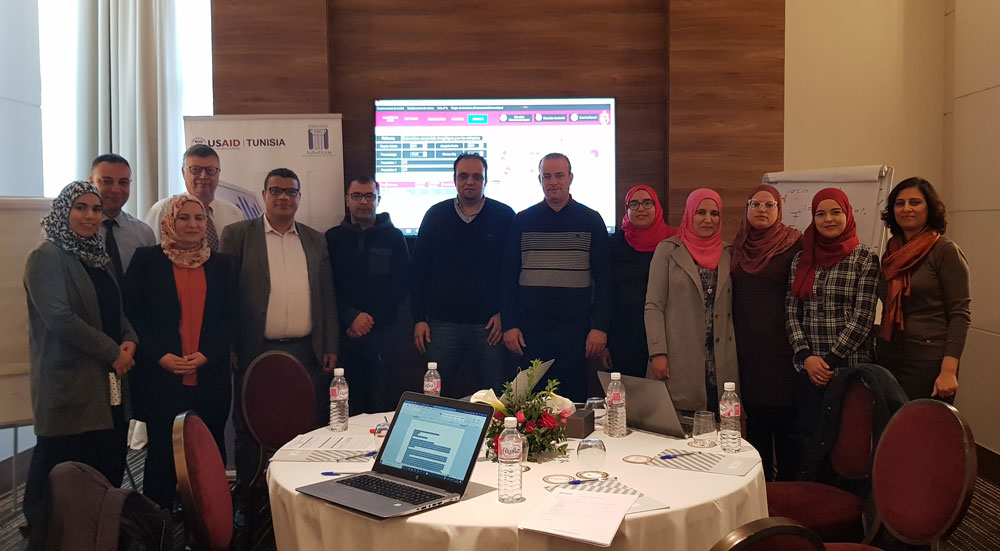In partnership with USAID and Chemonics, ESCWA organized a one week technical training for staff from the Ministry of Finance (MOF) in Tunisia within the scope “Strengthening the technical capacity of the Ministry of Finance in Tunisia using Computable General Equilibrium (CGE) modelling techniques”.
The CGE model is a useful tool for policy analysts as it is applied to analyze the economy, to evaluate impacts of policies, and to forecast future behaviors of the economy.
It can be classified as an extended/advanced I-O model. The latter is embedded inside each of our CGE models. In the CGE model, the relationships among the sectors of a national economy are quantified in several ways. The model produces estimates of the shifts in demand, supply, and prices of goods and services triggered by external/exogenous shocks. In the case of the models that were used, the shocks included: (i) shifts of the price of electricity, (ii) reduction in hydrocarbons subsidies, and (iii) depreciation of the dinar.
The first day of the one week training included an overview of the theoretical developments behind a basic CGE model and participants getting familiar with GAMS, a software package used to program and code CGE databases and models. The following four days, participants were immersed in practical hands-on exercises where they developed the skills and knowledge to build their own country-specific CGE model.
During the training, participants constructed models, calibrated models with macro-fiscal data and applied those models to generate changes in the budget brought about by different policy impacts.
Most importantly, we are happy to announce that with these tools and skills that staff from the DGRE have acquired, the Ministry of Finance in Tunisia is building the capacity to independently provide policymakers with impact assessments regarding an array of policy alternatives. In doing so, they are adopting a more rigorous and systematic approach to the formulation of socio-economic policies, while also building a stronger foundation for insights, debate and inter-ministry collaboration.
The CGE model is a useful tool for policy analysts as it is applied to analyze the economy, to evaluate impacts of policies, and to forecast future behaviors of the economy.
It can be classified as an extended/advanced I-O model. The latter is embedded inside each of our CGE models. In the CGE model, the relationships among the sectors of a national economy are quantified in several ways. The model produces estimates of the shifts in demand, supply, and prices of goods and services triggered by external/exogenous shocks. In the case of the models that were used, the shocks included: (i) shifts of the price of electricity, (ii) reduction in hydrocarbons subsidies, and (iii) depreciation of the dinar.
The first day of the one week training included an overview of the theoretical developments behind a basic CGE model and participants getting familiar with GAMS, a software package used to program and code CGE databases and models. The following four days, participants were immersed in practical hands-on exercises where they developed the skills and knowledge to build their own country-specific CGE model.
During the training, participants constructed models, calibrated models with macro-fiscal data and applied those models to generate changes in the budget brought about by different policy impacts.
Most importantly, we are happy to announce that with these tools and skills that staff from the DGRE have acquired, the Ministry of Finance in Tunisia is building the capacity to independently provide policymakers with impact assessments regarding an array of policy alternatives. In doing so, they are adopting a more rigorous and systematic approach to the formulation of socio-economic policies, while also building a stronger foundation for insights, debate and inter-ministry collaboration.
